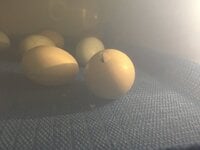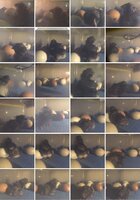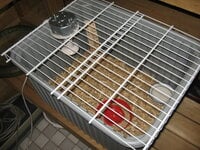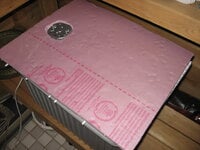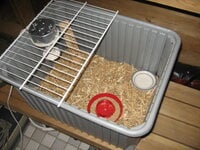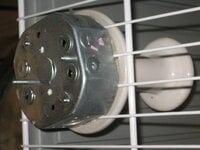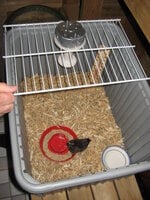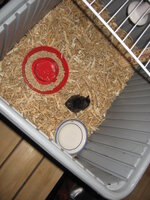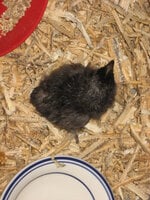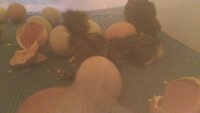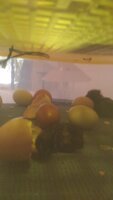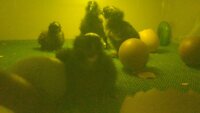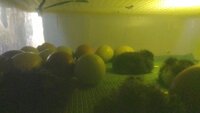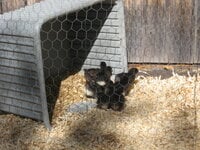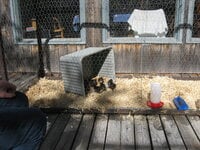I have two other threads running: one on construction of my coop "Authentic Woods 10' by 16' coop"...; the other started to get answers about "...signs of stress/not using roosts...".
We (me, visiting sister & BIL) have an incubation under way and I mixed some posts in with the 2nd thread, thought it more appropriate to start a new one to document the on-going incubation.
Background:
I ordered seven ISA Brown "19 week old, ready to lay" pullets on August 8th they arrived September 13th and transitioned into their new coop September 20th around 6pm. We had two eggs (one broken) on Monday the 23rd and now have 23 intact eggs from at least four layers so are quite pleased with their progress and current status.
My sister brought with her 17 fertilized (we believe) eggs from a mixed flock of 80+ laying hens located on Vancouver Island in British Columbia; three active roosters. The owner has been keeping her large flock for seven years and sells fresh organic eggs as well as meat birds (grow outs of 10-12 weeks.) that she started growing this past summer, currently using three tractors each with ~36 birds.
The 17 are on day 21 and so far we have four that have hatched, one on Day 18 and three at ~3am, ~7am and ~9am today Day 21. One more is pipping, the others "mysteriously inactive"...
I had to scramble to get a brooder together, finished this morning and moved the Day 18 chick in as he/she seemed to be getting "rowdy" with the other newly hatched chicks and remaining eggs. We are hoping to move another chick today (the 3am hatch) as soon as it is dry and fluffy.
My sister and her friend/flock owner spent two months prior to arrival here selecting hens based on: temperament, laying consistency, colour of eggs (I wanted an array) and mothering instincts. The 17 eggs were picked in the 48 hours prior to sister's arrival here and went into the incubator following arrival. Sister was diligent in labeling eggs and recording details in a log so that we would know which egg came from which mother (accurate in most cases, in a few to one of two hens). She is also recording colouring details of the new arrivals in hopes that we can track them back to the mothers.
The flock owner knows her birds and provided species info on each mother. So far the four are predominately black or black/grey, three with white markings. According to records and bits of late night memories (therefore possibly faulty) we have:
More results and details to follow as best we are able.
We (me, visiting sister & BIL) have an incubation under way and I mixed some posts in with the 2nd thread, thought it more appropriate to start a new one to document the on-going incubation.
Background:
I ordered seven ISA Brown "19 week old, ready to lay" pullets on August 8th they arrived September 13th and transitioned into their new coop September 20th around 6pm. We had two eggs (one broken) on Monday the 23rd and now have 23 intact eggs from at least four layers so are quite pleased with their progress and current status.
My sister brought with her 17 fertilized (we believe) eggs from a mixed flock of 80+ laying hens located on Vancouver Island in British Columbia; three active roosters. The owner has been keeping her large flock for seven years and sells fresh organic eggs as well as meat birds (grow outs of 10-12 weeks.) that she started growing this past summer, currently using three tractors each with ~36 birds.
The 17 are on day 21 and so far we have four that have hatched, one on Day 18 and three at ~3am, ~7am and ~9am today Day 21. One more is pipping, the others "mysteriously inactive"...
I had to scramble to get a brooder together, finished this morning and moved the Day 18 chick in as he/she seemed to be getting "rowdy" with the other newly hatched chicks and remaining eggs. We are hoping to move another chick today (the 3am hatch) as soon as it is dry and fluffy.
My sister and her friend/flock owner spent two months prior to arrival here selecting hens based on: temperament, laying consistency, colour of eggs (I wanted an array) and mothering instincts. The 17 eggs were picked in the 48 hours prior to sister's arrival here and went into the incubator following arrival. Sister was diligent in labeling eggs and recording details in a log so that we would know which egg came from which mother (accurate in most cases, in a few to one of two hens). She is also recording colouring details of the new arrivals in hopes that we can track them back to the mothers.
The flock owner knows her birds and provided species info on each mother. So far the four are predominately black or black/grey, three with white markings. According to records and bits of late night memories (therefore possibly faulty) we have:
- "Fausti" either a Lavender Orphington or Bard Rock, mostly black with white butt, possible cresting on head.
- "no name 1" (hoping to collect egg fragment to determine species), mostly black with white on chest/"cheeks"/butt/wingtips.
- "no name 2" either a Lavender Orphington or Red Rock, mostly black with white butt.
- "no name 3" Silkie/Americana cross, very black, hairy legs.
- "pipping 1" Easter Egger from "Eugenie"...
More results and details to follow as best we are able.


